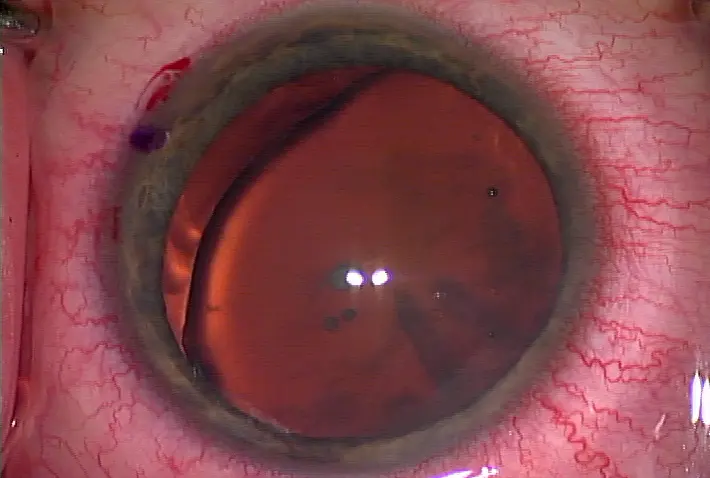Is this IOL centered? Angle kappa and multifocal IOLs
The
art of advanced technology IOLs
Is this IOL centered? Angle kappa and multifocal IOLs
by Richard Tipperman, MD
Richard
Tipperman, MD
Almost every clinician has had the
experience of seeing a patient with a multifocal IOL where the rings on the
optic are "perfectly centered" referable to the pupil and yet the
patient is unhappy with his/her visual function; another patient will have a multifocal
IOL where the rings are clearly "decentered" in relation to the pupil
yet the patient is very pleased. How can this be possible? Is one patient just
"high maintenance" while the other is easygoing? A better explanation
than "baseline personality" rephrases the question of "Is the
IOL centered?" to "Is the IOL centered in reference to what?"
It
is likely much more important that the IOL be centered in relation to the
patient's true visual axis rather than the geometric center of the pupil. To
understand this more fully we need to explore the concept of angle kappa.
In
this column I have been able to cover aspects of management and evaluation of
patients receiving advanced technology IOLs. Many of these issues have dealt
with the overall "psychology" of the physician-patient relationship
and the patient's decision-making process. In this article, I would like to
review the importance of evaluating angle kappa in patients preoperatively.
Although this is a biometric variable rather than a clinical counseling issue,
it is nonetheless a critical part of success with multifocal IOLs and one that
is often overlooked by many clinicians.
Angle
kappa defined
I believe the simplest way to understand
angle kappa is to recognize that a point from the geometric center of the pupil
to the retina will not, in most cases, be coincident with a line drawn from the
fovea to the line of sight. The difference between the geometric center of the
pupil and the line of sight is termed angle kappa. In most patients the fovea
lies slightly temporal and inferior to a line drawn from the retina, which is
orthogonal with the cornea and traverses the geometric center of the pupil. As
a result the corneal light reflex will be slightly nasal and superior to the
geometric enter of the pupil, producing what is termed a positive angle kappa.
Clinical
importance of angle kappa
If an IOL is decentered there is the
potential for it to induce coma or other higher order aberrations since the IOL
optic will be off axis from the true visual axis ("line of sight").
If a patient has significant angle kappa his/her pupillary axis (the geometric
center of the pupil) will not be in alignment with the visual axis. In these
patients the IOL may be "perfectly centered" with its rings symmetric
with the pupil—however a ray of light from the visual axis will not pass
through the center of the IOL but instead will strike the optic obliquely. This
can lead to poor image quality or even glare symptoms for the patient.
In this instance it would be better to
center the IOL over the patient's true visual axis. Even though the rings of
the IOL would not be centered referable to the pupil by having the center of
the optic coincident with the true visual axis, the overall image quality
should be better.
Editors'
note: Dr. Tipperman is affiliated with the Wills Eye Institute, Philadelphia
Contact
information
Tipperman: rtipperman@mindspring.com





留言
張貼留言